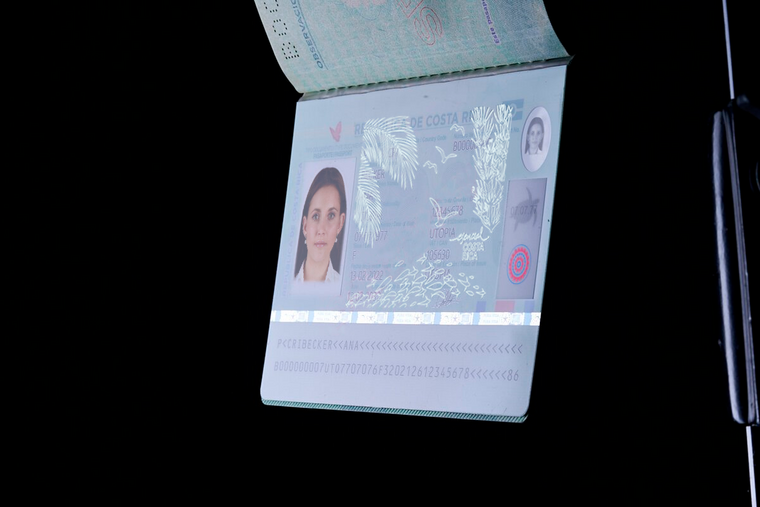Simple, secure process
The technology from Veridos makes the process of obtaining a new passport simple, quick, and secure. When a citizen applies for a passport, their fingerprints and facial image are captured electronically at either the Directorate’s offices, the Bank of Costa Rica, a post office, or one of the country’s consulates around the world, with those details stored in a secure database hosted by the Costa Rican government.
The biometric data is then saved to a chip in the cover of a citizen’s passport, providing the ability for border teams to quickly perform identity verification. That also makes the passport fully compliant with global standards for identification.
The passport’s pages feature more than 60 other security features, including holographic effects, microtext, security threads, intaglio, latent images, relief patterns, multiple laser images, and flipbook animations – some visible to the human eye, others not. But some of the most innovative elements sit within the passport’s main data page.
By using polycarbonate (rather than cotton-based paper), the passport’s all-important data page has been made highly durable, to the point where it will outlast the expiry of any passport. But it also means that security features can be directly embedded into different layers of the polycarbonate page, making it virtually impossible to counterfeit.
Taking advantage of the properties of polycarbonate, the new Costa Rica data page features multiple laser-engraved images and security features, including a transparent portrait window and a holographic strip. “It is the first passport in the whole of the Americas region to include a true color photo on a polycarbonate page,” highlights José Rolando Colchado, Managing Director of Veridos Mexico. The technical feat of creating a bright, clear image on polycarbonate was achieved through the use of Veridos’ highly innovative Clip ID technology. And it’s a passport technology that is already well-proven, having been in use across Bangladesh’s 72 domestic passport offices since 2020.





